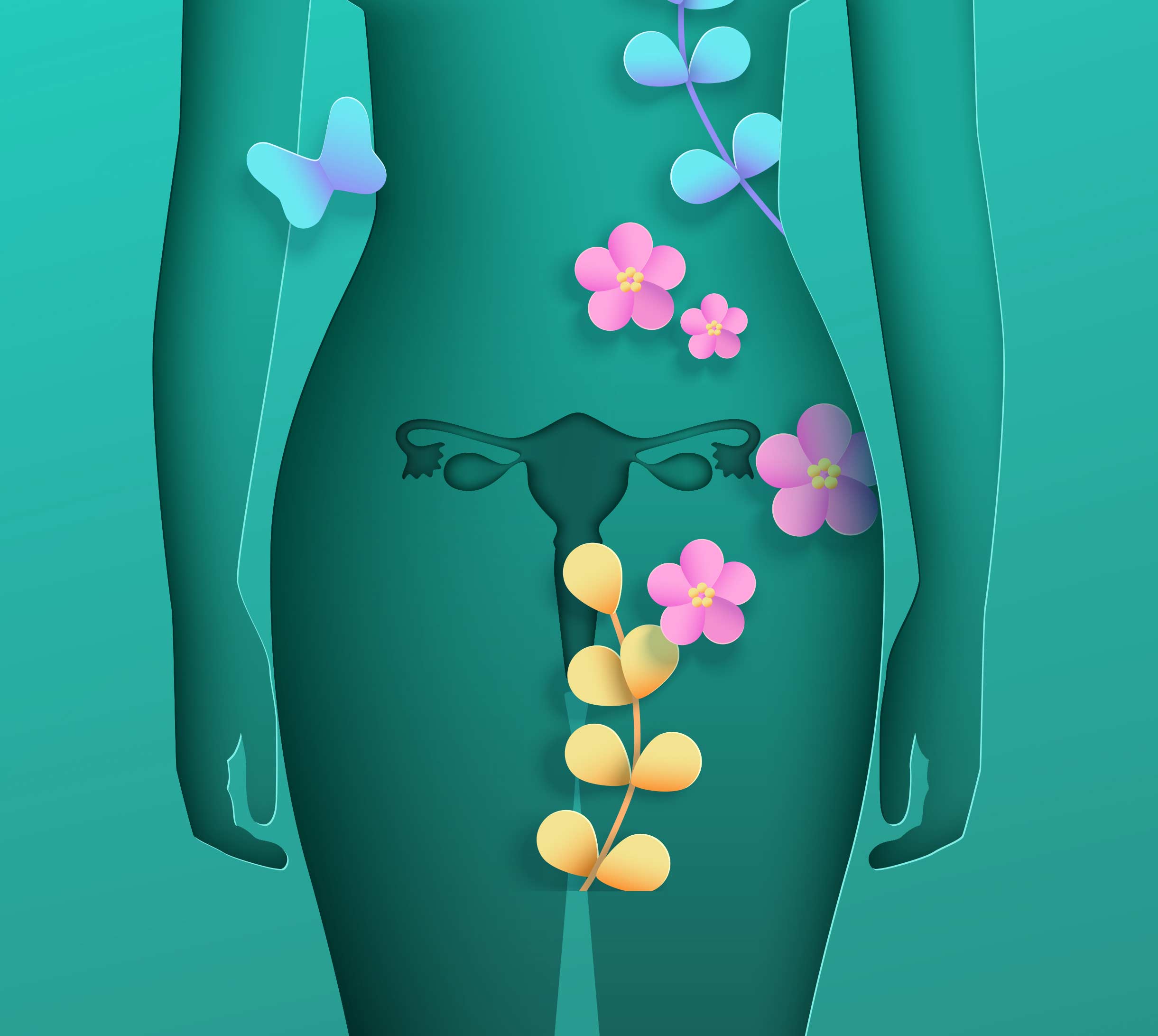Uterine diseases
The severity of symptoms determines the treatment and regular examination is the way to survive

There are numerous uterine diseases and problems, and the reason for this is the physiological differences that a woman experiences in her life stages, starting with her period and the hormonal changes that this stage witnesses every month then pregnancy and childbirth in addition to menopause and its accompanying disorders. Uterine diseases may include benign fibroids that may become malignant. There are diseases that may be a cause of infertility, such as endometriosis or abnormal uterine bleeding, and more serious diseases such as cancer.
Uterine fibroids
Fibroids are growths made of smooth muscle cells and fibrous connective tissue. These growths develop in the uterus and appear alone or in groups. They range in size, from as small as a grain of rice to as big as a melon. In some cases, fibroids can grow into the uterine cavity or outward from the uterus on stalks.
An estimated 20% to 50% of women of reproductive age currently have fibroids, and up to 77% of women will develop fibroids sometime during their childbearing years. Only about one-third of these fibroids are large enough to be detected by a health care provider during a physical exam, so they are often undiagnosed. In more than 99% of fibroid cases, the tumors are not cancerous and do not increase the risk for uterine cancer.
It is common that women who have fibroids do not experience any noticeable symptoms. Other women with fibroids experience severe symptoms that interfere with their daily lives. Since the growth of most fibroids slows as you approach menopause, your healthcare provider may simply suggest “watchful waiting” if your symptoms are tolerable. With this approach, the healthcare provider closely monitors your symptoms with frequent follow-up visits and ultrasounds to make sure there are no significant changes in your condition.
Treatment may be necessary if your fibroids cause significant symptoms. Treatment options include medicinal and surgical approaches. Your doctor will recommend treatment based on your symptoms, location and size of the fibroids, your age and medical history, and your health goals such as a desire for pregnancy.
Hormonal treatment can include gonadotropin-releasing hormone agonists (GnRH agonists). This treatment lowers your estrogen level and triggers a temporary “medical menopause.” GnRH agonists are used to shrink the fibroid(s). They are also used to stop your period in preparation for surgery or to improve your blood count. Doctors will not typically administer this medication for longer than a year — and the medication’s effects are reversed once it leaves your system.
Oral contraceptive pills (or a patch or vaginal ring) can help reduce bleeding associated with fibroids and progesterone-containing agents — pills, implant, injection or intrauterine device (IUD) — may also control bleeding.
During a hysterectomy, the entire uterus is removed. Because a hysterectomy is a major surgery, it is only recommended to treat fibroid cases for women who are not interested in preserving their fertility. It is the most effective method of fibroid treatment because it eliminates the possibility of recurrence.
Uterine infections
Gynecological and uterine infections are common diseases among women, and they may cause many problems. They may affect fertility, unless treated early. There are many causes that can lead to infections, whether cervicitis or endometriosis.
Possible causes of cervicitis include sexually transmitted infections. Most often, the bacterial and viral infections that cause cervicitis are transmitted by sexual contact. Cervicitis can result from common sexually transmitted infections (STIs). An allergy, either to contraceptive spermicides or to latex in condoms, may lead to cervicitis. A reaction to feminine hygiene products, such as douches or feminine deodorants, also can cause cervicitis. An overgrowth of some of the bacteria that are normally present in the vagina (bacterial vaginosis) can lead to cervicitis.
Most often, cervicitis causes no signs and symptoms, and you may only learn you have the condition after a pelvic exam performed by your doctor for another reason. If you do have signs and symptoms, they may include large amounts of unusual vaginal discharge, frequent, painful urination, pain during sex, bleeding between menstrual periods and vaginal bleeding after sex, not associated with a menstrual period.
Your cervix acts as a barrier to keep bacteria and viruses from entering your uterus. When the cervix is infected, there’s an increased risk that the infection will travel into your uterus. Cervicitis that’s caused by gonorrhea or chlamydia can spread to the uterine lining and the fallopian tubes, resulting in pelvic inflammatory disease (PID), an infection of the female reproductive organs that can cause fertility problems if left untreated. Cervicitis can also increase the risk of getting HIV from an infected sexual partner.
You won’t need treatment for cervicitis caused by an allergic reaction to products such as spermicide or feminine hygiene products. If you have cervicitis caused by a sexually transmitted infection (STI), both you and your partner will need treatment, often with an antibiotic medication. Antibiotics are prescribed for STIs such as gonorrhea, chlamydia or bacterial infections, including bacterial vaginosis.
Your doctor may offer antiviral medication if you have genital herpes, which helps decrease the amount of time you have cervicitis symptoms. However, there is no cure for herpes. Herpes is a chronic condition that may be passed to your sexual partner at any time. To avoid passing a bacterial infection along to your partner, wait to have sex until you’re finished with the treatment recommended by your doctor.
Cervical Cancer
The World Health Organization recently stated that cervical cancer is the fourth most common cancer in women worldwide. This report came on the occasion of World Cancer Day, where the WHO’s Global Strategy for the Elimination of Cervical Cancer a Public Health Problem provided a roadmap, through the following 90-70-90 targets for 2030: 90% of girls fully vaccinated with the HPV vaccine by age 15, 70% of women are screened with a high-performance test by 35 and 45 years of age and 90% of women identified with cervical disease receive treatment. Successful implementation of all three could reduce more than 40% of new cases of the disease and 5 million related deaths by 2050. Human papillomavirus (HPV) is a group of viruses that are extremely common worldwide. There are more than 100 types of HPV, of which at least 14 are cancer-causing (also known as high risk type). HPV is mainly transmitted through sexual contact and most people are infected with HPV shortly after the onset of sexual activity. Two HPV types (16 and 18) cause 70% of cervical cancers and pre-cancerous cervical lesions. There is also evidence linking HPV with cancers of the anus, vulva, vagina, penis and oropharynx.
Primary prevention begins with HPV vaccination of girls and boys aged 11-12 years, before they become sexually active and before exposure to HPV. Once infection occurs, the vaccine may lose its effectiveness. If they are not fully vaccinated at the age of 11 to 12 years, the Centers for Disease Control and Prevention (CDC) recommends to give the vaccine to girls and women at age 26, and boys and men at age 21.
Pap Smear and its role in early diagnosis
A Pap smear is a procedure to test for cervical cancer in women. It involves collecting cells from your cervix — the lower, narrow end of your uterus that’s at the top of your vagina. Detecting cervical cancer early with a Pap smear gives you a greater chance at a cure. Your doctor will gently insert an instrument called a speculum into your vagina. The speculum holds the walls of your vagina apart so that your doctor can easily see your cervix. Inserting the speculum may cause a sensation of pressure in your pelvic area. Then your doctor will take samples of your cervical cells using a soft brush and a flat scraping device called a spatula.
A Pap smear can alert your doctor to the presence of suspicious cells that need further testing. If your Pap smear is abnormal, your doctor may perform a procedure called colposcopy using a special magnifying instrument (colposcope) to examine the tissues of the cervix, vagina and vulva. Your doctor also may take a tissue sample (biopsy) from any areas that appear abnormal. The tissue sample is then sent to a laboratory for analysis and a definitive diagnosis.
















